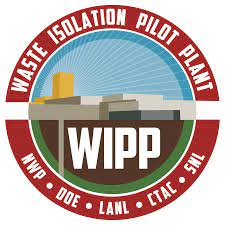The Waste Isolation Pilot Plant (WIPP) is an underground repository for solid wastes generated by research and manufacture of nuclear weapons for the U.S. arsenal. It is located near Carlsbad, New Mexico. There are major problems with respect to fire training and firefighting vehicles. Its fleet is in disrepair after years of neglect according to the U.S. Energy Department’s Office of Inspector General.
The IG’s investigation was triggered by allegations regarding fire protection concerns at the repository. The WIPP is the backbone of a multi-billion-dollar effort to clean up Cold War-era waste from past nuclear research and bomb manufacturing at national laboratories and defense sites across the U.S.
Investigators found that the problems with the fire department training program went back to at least 2016. They pointed out that there was an underdeveloped training curriculum for the technical rescue programs. They also mentioned that there were claims by firefighters that their training needs weren’t being met.
According to the IG’s report, the problems persisted because the contractor that manages the repository inadequately addressed and closed recommendations from prior internal assessments that were aimed at fixing the deficiencies. The report also said that there was inadequate oversight by Energy Department officials.
The Office of the Inspector General said, “WIPP has experienced growth with the number of buildings and employees since 2006 and is anticipated to operate beyond 2050. The next management and operating contractor must be able to provide effective emergency response at WIPP to protect lives, property and the environment.”
U.S. Department of Energy (DoE) officials responding to the Inspector General said that the agency has followed through with corrective actions and will continue to “make progress on ensuring local fire departments and first responders have all necessary training and equipment to handle any event in relation to WIPP’s operations.” The agency officials admitted that the was much more work to be done.
The safety concerns were raised as New Mexico Governor Grisham and others voiced opposition to expanding the types of radioactive waste that can be shipped to the repository. Grisham sent a letter this month to U.S. DoE Secretary Granholm. In the letter, Grisham noted continuing frustration with respect to the lack of meaningful public engagement from federal officials on waste cleanup, shipments of waste and long-term plans for the repository.
This month, the work of processing incoming waste shipments was temporarily halted after workers discovered radioactive liquid in a container from the Idaho National Laboratory. The WIPP only accepts solid wastes.
The latest report from a federal oversight board also cited three recent incidents. One of the incidences involved a container from Los Alamos National Laboratory that was placed in the repository without adequate analysis of it flammability. It turned out that the contained posed no risk.
Nuclear Waste Partnership is the contractor that manages the repository. They expanded their fire brigade to a department with full-time responders following two emergencies in 2014. One emergency involved a salt-hauling truck that was followed days later by a radiation release from a drum that had been inappropriately packed at Los Alamos. These incidents prompted major policy and procedure overhauls related to the national cleanup program.
According to the IG, a 2019 review found that almost half of the WIPP firefighters had not participated in required live training for at least on year. Some had not participated in over two years. Another review in April 2021 found that not all firefighter training records were being maintained in accordance with the hazardous waste permit issued by the state Environmental Department.
In interviews, several WIPP firefighters told investigators that the majority of the training was web-based as opposed to hands-on fire drills, vehicle extrications or rope training. The firefighter also expressed concern that without adequate training, they would lose their skills
Regarding the WIPP fire department fleet, federal officials said that they were in the process of revising maintenance procedures and that about two million dollars was spent to purchase two new fire trucks in 2021.
